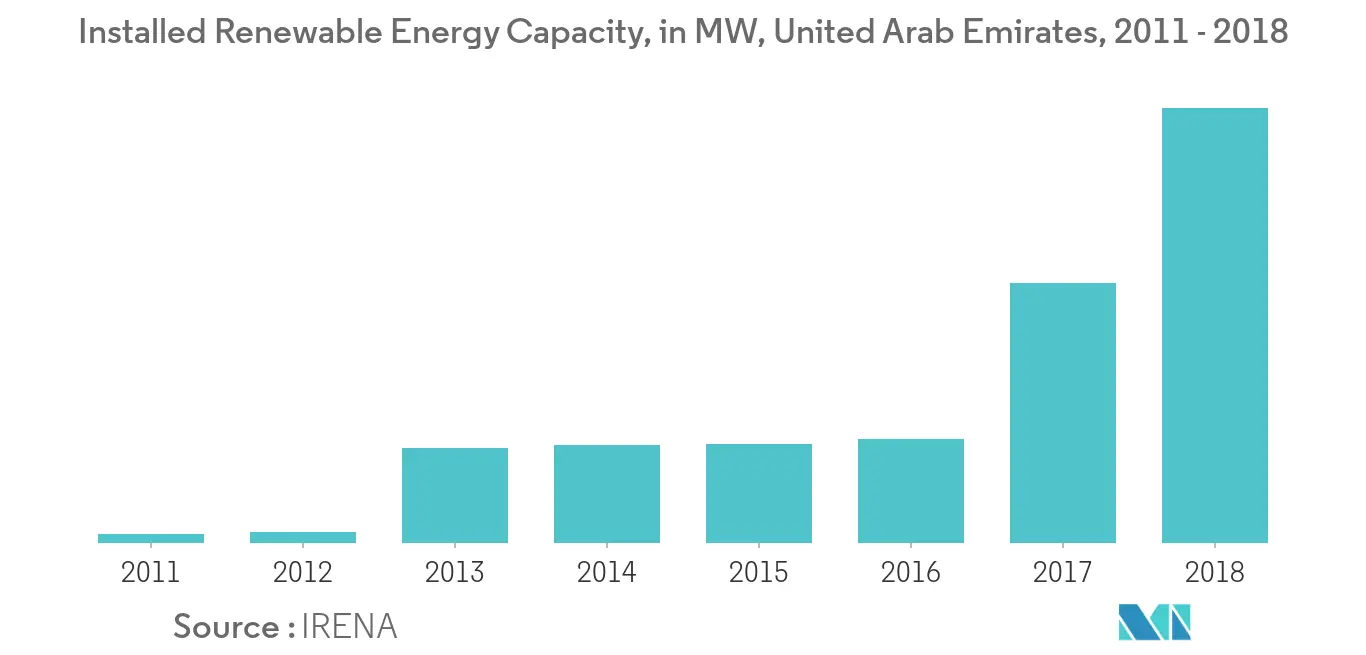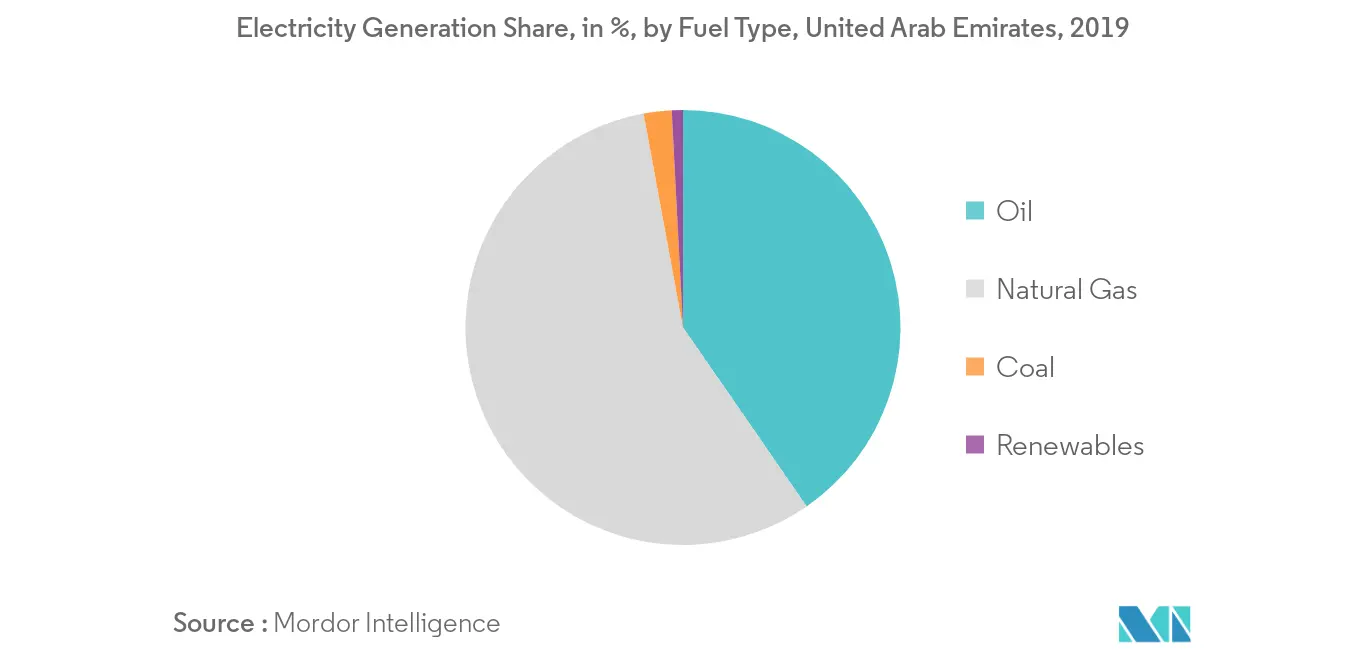Market Trends of United Arab Emirates Power EPC Industry
Growth in Renewable Energy Sector to Drive the Market
- The United Arab Emirates has undertaken significant strides over the past several years and is leading the region's drive toward renewable energy, particularly in the solar sector. To meet rising demand, the country has embarked on a challenging mission to increase energy security, diversify its energy sources, and increase the share of solar in its power mix.
- The United Arab Emirates has proven that it holds some of the best solar resources in the world while supporting economic and regulatory policies that have helped its clean energy program to excel.
- The USD 13.6 billion (AED 50 billion) Mohammed bin Rashid Al Maktoum Solar Park has a planned capacity of 5,000MW by 2030.
- The plant will provide clean energy to more than 270,000 residences in Dubai, reducing 1.4 million tonnes of carbon emissions a year. The project will feature the world's tallest solar tower, measuring 260m, with the world's largest thermal energy storage capacity.

Growing Electricity Demand to Drive the Market
- The United Arab Emirates with nearly 16,622 megawatts (MW) of generation capacity and 14,788 MW of peak demand in 2017, Abu Dhabi ranks first among the United Arab Emirates (UAE) and third among GCC countries in terms of generation assets and peak demand.
- Abu Dhabi's rising population and growing economy have been the key factors driving the increase in peak demand, which grew by an average of 8.53% per year between 2007 and 2018.
- The Abu Dhabi Transmission and Despatch Company (TRANSCO) expects the compounded future annual growth rate of peak demand to be 3.5% for the period 2016- 2030, significantly lower than the actual increase in the past 10 years.
- The electricity peak demand including supplies to Abu Dhabi and the Northern Emirates is projected to increase from 14.2 gigawatts (GW) in 2016 to 20 GW-26 GW by 2030.


